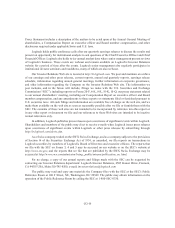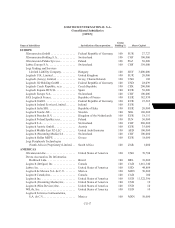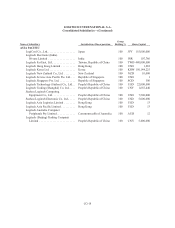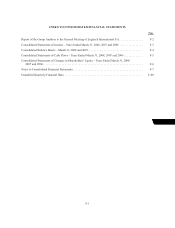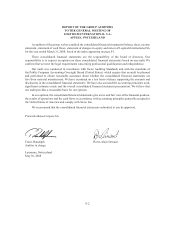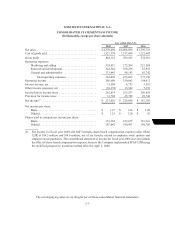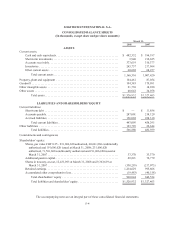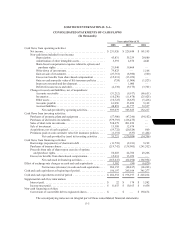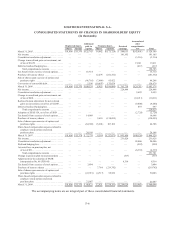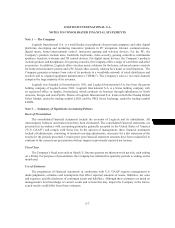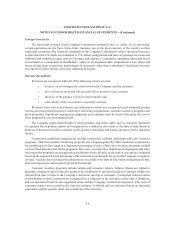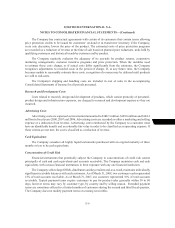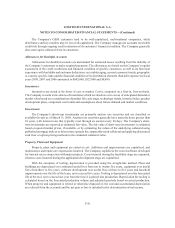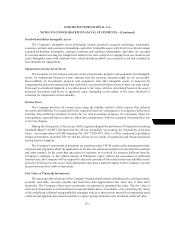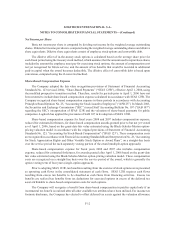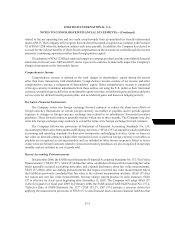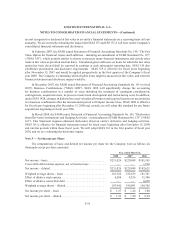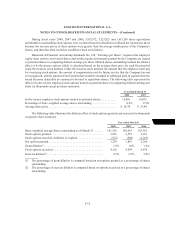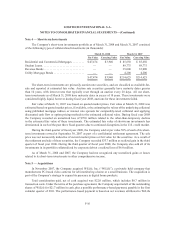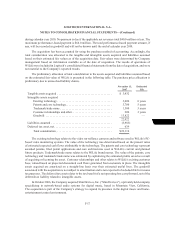Logitech 2008 Annual Report Download - page 78
Download and view the complete annual report
Please find page 78 of the 2008 Logitech annual report below. You can navigate through the pages in the report by either clicking on the pages listed below, or by using the keyword search tool below to find specific information within the annual report.F-8
LOGITECH INTERNATIONAL S.A.
NOTES TO CONSOLIDATED FINANCIAL STATEMENTS—(Continued)
Foreign Currencies
The functional currency of the Company’s operations is primarily the U.S. dollar. To a lesser extent,
certain operations use the Euro, Swiss franc, Japanese yen or the local currency of the country as their
functional currencies. The financial statements of the Company’s subsidiaries whose functional currency
is other than the U.S. dollar are translated to U.S. dollars using period-end rates of exchange for assets and
liabilities and monthly average rates for revenues and expenses. Cumulative translation gains and losses
are included as a component of shareholders’ equity in accumulated other comprehensive loss. Gains and
losses arising from transactions denominated in currencies other than a subsidiary’s functional currency
are reported in other income, net in the statement of income.
Revenue Recognition
Revenues are recognized when all of the following criteria are met:
HYLGHQFHRIDQDUUDQJHPHQWH[LVWVEHWZHHQWKH&RPSDQ\DQGWKHFXVWRPHU
GHOLYHU\KDVRFFXUUHGDQGWLWOHDQGULVNRIORVVWUDQVIHUWRWKHFXVWRPHU
WKHSULFHRIWKHSURGXFWLVIL[HGRUGHWHUPLQDEOHDQG
FROOHFWLELOLW\RIWKHUHFHLYDEOHLVUHDVRQDEO\DVVXUHG
Revenues from sales to distributors and authorized resellers are recognized net of estimated product
returns and expected payments for cooperative marketing arrangements, customer incentive programs and
price protection. Significant management judgments and estimates must be used to determine the cost of
these programs in any accounting period.
The Company grants limited rights to return product, and return rights vary by customer. Estimates
of expected future product returns are recognized as a reduction of revenue at the time of sale, based on
analyses of historical trends by customer and by product, distributor and retailer inventory levels, and other
factors.
Cooperative marketing arrangements include contractual customer marketing and sales incentive
programs. Under the customer marketing programs, the Company generally offers customers an allowance
for marketing activities equal to a negotiated percentage of sales. Other sales incentive programs include
various fixed discount and rebate programs. The costs of cooperative marketing arrangements and other
sales incentive programs are recognized as a reduction of the sale price at the time of sale and are estimated
based on the negotiated fixed percentage of the customer’s purchases in the period the Company recognizes
revenue. Accruals for sales incentive programs are recorded at the time of sale based on negotiated terms,
historical experience and inventory levels in the channel.
Customer incentive programs include volume and consumer rebates. Volume rebates are related to
purchase volumes or sales of specific products by distributors to specified retailers. Consumer rebates are
offered from time to time at the Company’s discretion directly to end-users. Contractual volume rebates
to distribution or retail customers are recognized as a reduction of the sale price at the time of shipment,
and are estimated based on the negotiated terms and the Company’s historical experience. The costs of
consumer rebates are recorded at the time the incentive is offered and are estimated based on historical
experience and the specific terms and conditions of the incentive.


